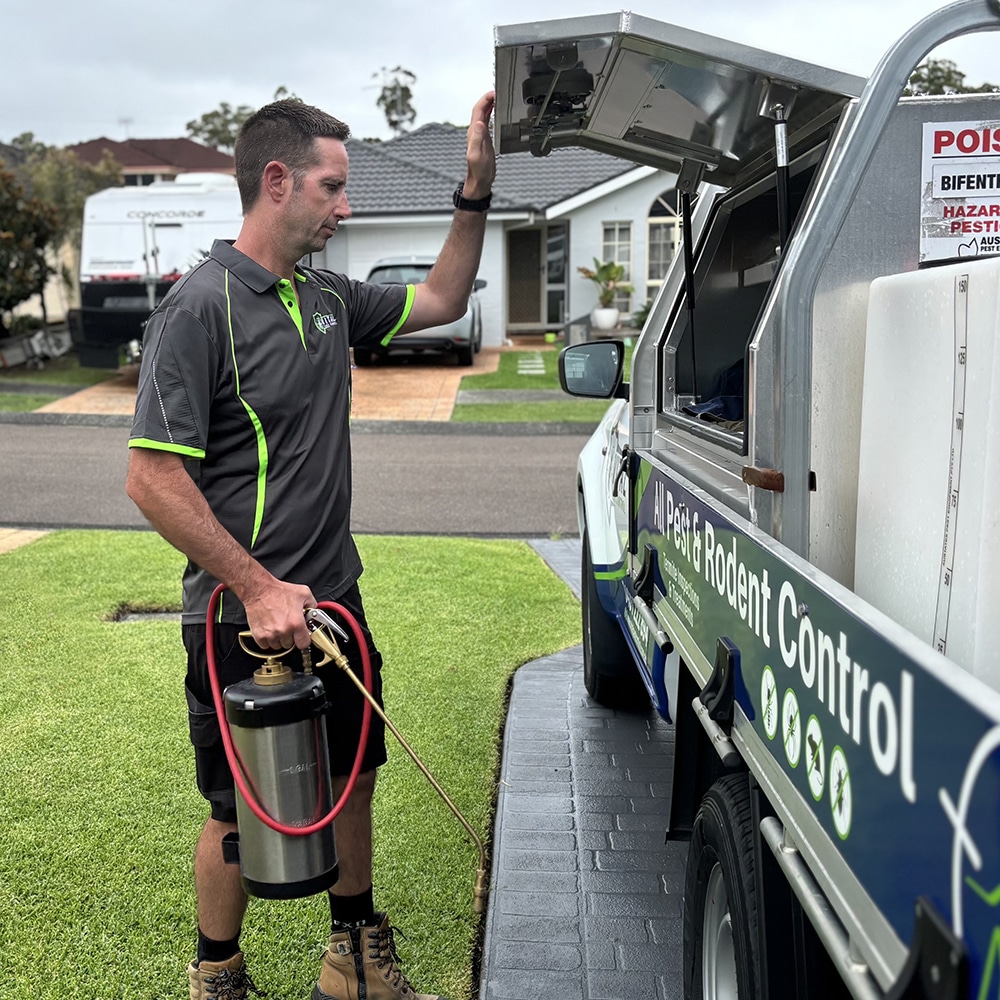
• Reliable And Trustworthy
• Responsive Proactive Solutions
• Detail-focused for lasting results
EXCELLENTTrustindex verifies that the original source of the review is Google. Great communication, on time, pleasant and thorough. Highly recommend.Posted onTrustindex verifies that the original source of the review is Google. Adam was extremely efficient in his work at our home. He provided follow up messages to confirm the inspection date & arrived on time. Adam explained all the details involved with the pest inspection & the expected timeframe. Once the work was completed, Adam called & discussed his report & outcomes. I felt completely comfortable with Adam being in our home & he has a quiet yet confident manner. I can highly recommend Adam for any pest inspection required.Posted onTrustindex verifies that the original source of the review is Google. Can't recommend Adam and his team enough, they were super reliable and carried out their work with utmost professionalism. Thank you again for taking car of my mother in laws place, we will definitely be using you again! 🙂Posted onTrustindex verifies that the original source of the review is Google. I would highly recommend Adam at Vital Pest Control for his friendly customer service, extensive knowledge and fantastic and thorough work. We have used Vital Pest Control for a few years and are always very happy with the quality and longevity of the spray. Adam is always happy to provide information about service and products and is on time and efficient.Posted onTrustindex verifies that the original source of the review is Google. As a first time home buyer we used Adam prior to us moving in He was prompt, thorough, professional and easy to work with Can 100% guarantee I will be using him againPosted onTrustindex verifies that the original source of the review is Google. Adam was amazing very professional he explained everything and was very thorough taking great care in providing a professional service. I would highly recommend.Posted onTrustindex verifies that the original source of the review is Google. Have used well known pest contoll for over ten years. Recently standard of their work had fallen. Rang adam at vital pest control. Could not reccomend him highly enough. Thankyou adam and we will see you in twelve months. Mark and julie hillPosted onTrustindex verifies that the original source of the review is Google. Quick reliable service, highly recommend looking fwd to our next annual servicePosted onTrustindex verifies that the original source of the review is Google. Punctual, good job done & very friendly service.Posted onTrustindex verifies that the original source of the review is Google. Highly recommend. Turned up on time and provided a great and efficient service. We are due for another spray soon and will definitely get them back as we haven’t had a pest issue since the last visit.
Welcome to Vital Pest Control, your go-to for Eco Friendly Pest Control On The Central Coast NSW. We offer solutions that protect your home and environment. Our services are reliable and detail-focused for lasting results.
Low-Toxicity Formulas (APVMA-Approved)
We use low-toxicity, APVMA-approved formulas. These are safe for your family and pets. You can trust our eco-friendly pest control solutions for a healthier home.
The Environmental Impact of Pests in the Home
Pests threaten your home and health. They can damage structures and spread disease. Our services manage these risks, creating a safer environment for your family.
Eco Friendly Pest Certifications
We are committed to eco-friendly practices. Our certifications reflect our dedication. Choose us for environmentally responsible pest control on the Central Coast NSW.
Integrated Pest Management
Our integrated pest management approach is proactive. We focus on long-term prevention. This method ensures effective and sustainable pest control.
Ongoing Pest Monitoring
We offer ongoing pest monitoring. This service keeps your home pest-free. Stay ahead of infestations with our expert support.
Pest Education & Awareness
We believe in educating our clients. Our team provides valuable pest awareness. Learn how to protect your home with our expert guidance.
Discover how we can help you today! Contact us to learn more about our services.

Looking for Eco Friendly Pest Control On The Central Coast NSW that prioritises safety and health? Discover Vital Pest Control’s low-toxicity solutions, approved by the APVMA, for peace of mind.
On the Central Coast of NSW, the demand for environmentally friendly pest control solutions is on the rise. Homeowners and businesses alike are seeking alternatives that align with sustainable practices. Low-toxicity formulas approved by the Australian Pesticides and Veterinary Medicines Authority (APVMA) offer an effective solution, balancing safety with efficacy. These formulas cater to the growing need for protection against pests while minimising harm to the environment.
Understanding APVMA Approval
The APVMA ensures that pest control products meet stringent safety and efficacy standards before they reach the market. Low-toxicity formulas with APVMA approval have undergone rigorous testing, confirming their safety for use around humans and pets. This approval guarantees that the products are effective against pests while being environmentally responsible. Trusting APVMA-approved options provides peace of mind for Central Coast residents prioritising health and sustainability.
Benefits of Low-Toxicity Formulas
Low-toxicity formulas offer numerous advantages, particularly for families and businesses on the Central Coast. These products reduce the risk of adverse health effects associated with traditional chemical treatments. They are designed to target pests specifically, limiting their impact on non-target species. This specificity helps maintain ecological balance, preserving local wildlife and beneficial insects. Moreover, these formulas often have fewer odours, enhancing comfort during and after application.
Applications in Residential Areas
For homeowners, low-toxicity pest control is a practical choice for safeguarding living spaces. These formulas can effectively manage common household pests such as ants, cockroaches, and spiders without exposing residents to harsh chemicals. Applicators can treat indoor and outdoor areas, ensuring comprehensive coverage. Using these products encourages a healthier home environment, reducing the potential for chemical sensitivities or allergies among family members.
Commercial Use on the Central Coast
Businesses on the Central Coast also benefit from low-toxicity pest control solutions. Restaurants, cafes, and retail spaces can maintain pest-free environments without compromising customer safety. APVMA-approved products are suitable for sensitive areas, ensuring compliance with health regulations. By choosing low-toxicity options, businesses demonstrate their commitment to environmental stewardship, appealing to eco-conscious consumers and enhancing their brand reputation.
Choosing the Right Product
When selecting a low-toxicity formula, it is crucial to consider the specific pest issue and the affected area. Consulting with a professional pest control service familiar with APVMA regulations can help identify the most suitable product. These experts can provide tailored advice, ensuring effective pest management while prioritising safety and sustainability. By making informed choices, residents and businesses on the Central Coast can protect their properties and the environment.
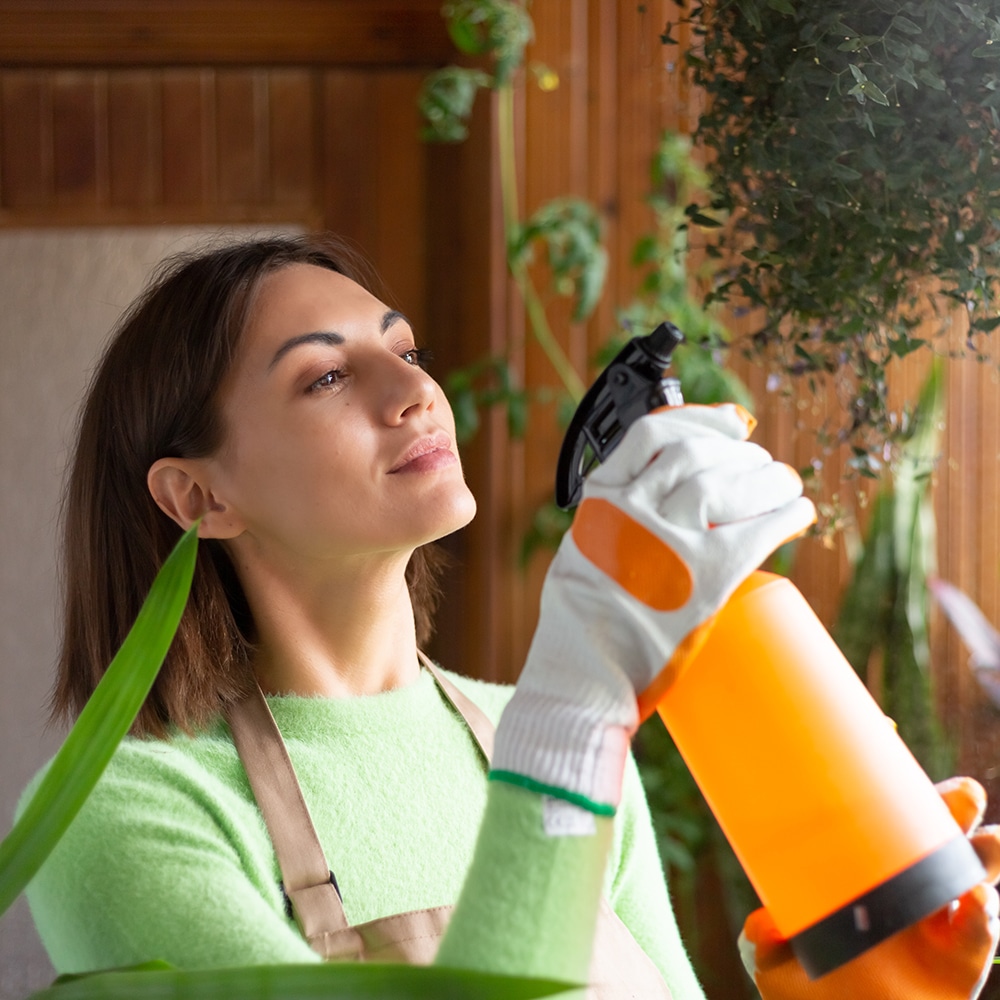
Is Eco Friendly Pest Control On The Central Coast NSW vital for a healthier home environment? Vital Pest Control offers sustainable solutions that protect both your family and the local ecosystem.
Living on the Central Coast NSW offers breathtaking scenery and a serene lifestyle. However, many homeowners face the challenge of pests invading their homes. These pests not only cause inconvenience but also have a significant environmental impact. Understanding this impact can lead to more effective pest management strategies, safeguarding both homes and the local ecosystem.
Disruption of Local Ecosystems
Pests like rats, cockroaches, and termites can disrupt local ecosystems by invading habitats and competing with native species for resources. This competition often results in native species decline, affecting biodiversity. On the Central Coast, maintaining a balance in the ecosystem is crucial for preserving the natural beauty and health of the area. Homeowners should consider eco-friendly pest control methods to minimise these disruptions.
Use of Harmful Chemicals
Many pest control solutions rely on chemical pesticides, which can negatively impact the environment. When these chemicals are overused or improperly applied, they can seep into the soil and waterways, harming aquatic life and contaminating drinking water sources. The Central Coast’s proximity to water bodies like the Hawkesbury River makes it vital to choose sustainable pest control options that reduce chemical use.
Waste Generation and Disposal
Pests often leave behind waste, such as droppings and nests, which can contribute to household waste. This waste can attract more pests, creating a vicious cycle. Proper disposal and management of pest-related waste are essential to prevent further environmental damage. Homeowners on the Central Coast can seek guidance from local waste management services to handle pest waste responsibly.
Impact in Human Health
Pests can also affect human health, indirectly impacting the environment. Pests carry diseases that can spread to humans, leading to increased healthcare demands and the use of medical resources. Reducing pest populations through natural means can help protect the health of Central Coast residents and lessen the strain on local healthcare systems.
Conclusion: A Call for Sustainable Solutions
Addressing the environmental impact of pests in homes on the Central Coast NSW requires a shift towards sustainable pest management practices. By opting for eco-friendly solutions and being mindful of the local environment, homeowners can protect their homes and contribute to preserving the area’s unique ecosystem. Embracing these practices ensures a healthier environment for future generations.

Looking for reliable pest control on the Central Coast? Discover eco-friendly certification benefits today.
In today’s world, eco-friendly practices are gaining momentum, especially in pest management. On the Central Coast of NSW, businesses and residents alike are increasingly seeking sustainable solutions. Eco-friendly pest certifications are becoming crucial for those prioritising environmental responsibility. This article delves into the importance and benefits of these certifications in the region.
Understanding Eco-Friendly Pest Certifications
Eco-friendly pest certifications ensure that pest control services adhere to environmentally safe methods. These certifications often involve using non-toxic substances and techniques that minimise harm to the ecosystem. For businesses on the Central Coast, obtaining these certifications can enhance credibility, showcasing a commitment to sustainability.
Benefits for Businesses and Consumers
Certified eco-friendly pest control providers attract environmentally conscious customers, setting themselves apart from competitors. Businesses enjoy improved reputation, while consumers benefit from safer pest management solutions. This mutual benefit fosters a healthier environment and promotes sustainable practices across the region.
Popular Eco-Friendly Certifications
Several certifications recognise eco-friendly pest control. The Australian Organic Certification and the Global GreenTag are well-regarded in the industry. These certifications evaluate pest control methods, ensuring they meet strict environmental standards. For businesses on the Central Coast, obtaining these can be a significant market advantage.
Steps to Achieve Certification
To obtain eco-friendly pest certifications, businesses must first assess their current practices. Implementing green pest control methods, such as integrated pest management, is essential. Once the necessary changes are made, companies can apply for certification, undergoing evaluation to ensure compliance with eco-friendly standards.
Impact on the Central Coast Environment
Eco-friendly pest certifications contribute significantly to the Central Coast’s environmental sustainability. By reducing the reliance on chemical pesticides, these practices help protect local wildlife and waterways. As more businesses adopt certified methods, the overall ecological footprint of pest control in the region diminishes, promoting a healthier community.
Incorporating eco-friendly pest certifications can be a game-changer for businesses on the Central Coast. These certifications not only support environmental health but also align with the growing consumer demand for sustainable solutions. As the region continues to embrace eco-friendly practices, the benefits extend beyond individual businesses, contributing to a more sustainable future for all.
Adam Sands - Licenced Pest Technician
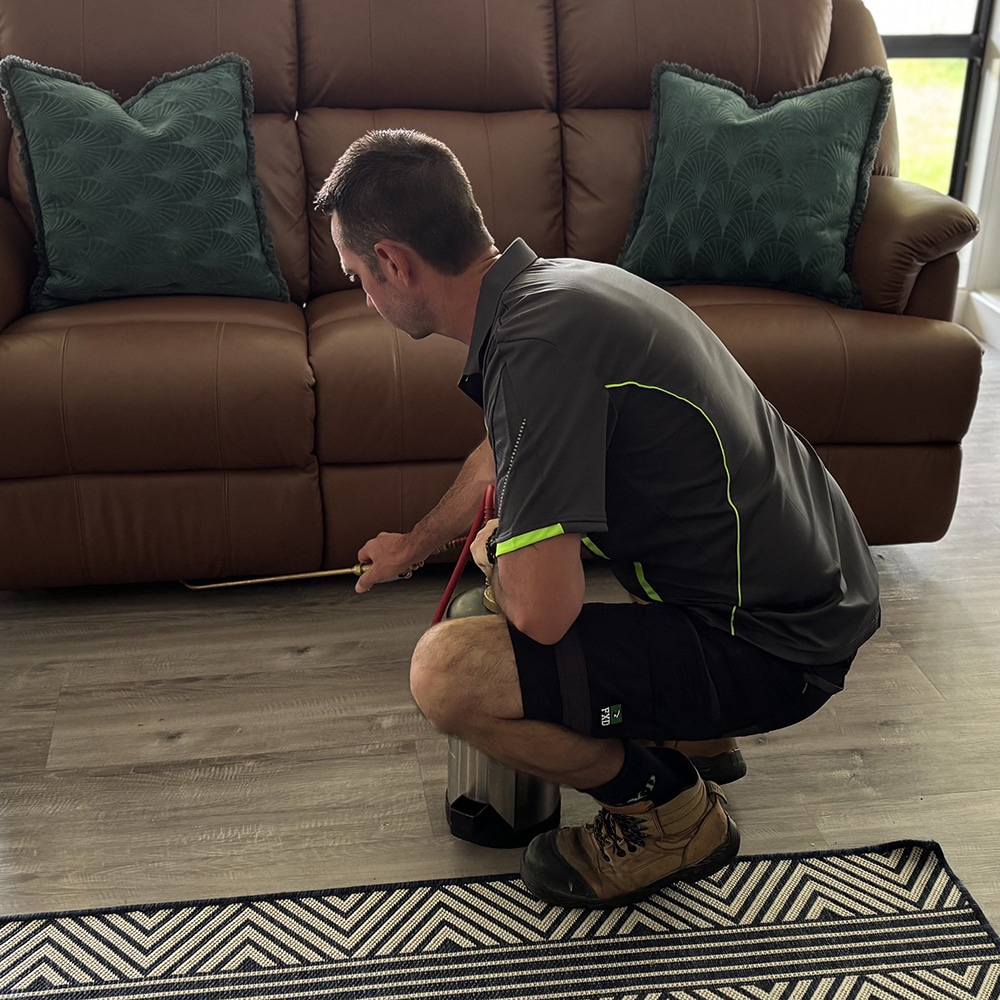
Is your Central Coast home protected with reliable, trustworthy early integrated pest management solutions?
Integrated Pest Management (IPM) is an essential strategy for effective pest control on the Central Coast NSW. This approach focuses on balancing pest control with environmental health, aiming to reduce the reliance on chemical interventions. By utilising a combination of techniques, IPM offers a sustainable method to manage pests while safeguarding the area’s rich biodiversity.
Understanding Integrated Pest Management
IPM is a multifaceted strategy that involves understanding pest lifecycles and their interactions with the environment. By monitoring pest populations and implementing preventative measures, IPM reduces the need for chemical pesticides. It employs a range of tactics, including biological control, habitat manipulation, and the use of resistant plant varieties. This holistic approach ensures that pest management is both effective and environmentally friendly.
Benefits of IPM on the Central Coast
The Central Coast’s unique ecological landscape benefits greatly from IPM practices. By prioritising natural pest control methods, IPM helps preserve the area’s native flora and fauna. This approach also reduces chemical runoff into local waterways, protecting aquatic ecosystems. Moreover, IPM can lead to long-term cost savings for agricultural and residential areas, as it focuses on sustainable, preventative measures rather than reactive chemical treatments.
Implementing IPM Techniques
Successful IPM implementation involves several key steps. First, regular monitoring of pest levels is crucial to determine the need for intervention. This can include visual inspections and the use of traps. Next, cultural and physical controls, such as crop rotation and barriers, can prevent pest establishment. Biological controls, like introducing natural predators, can effectively reduce pest populations. Chemicals are used as a last resort, ensuring minimal impact on non-target species and the environment.
Challenges and Considerations
Adopting IPM on the Central Coast comes with its own set of challenges. Climate variations and the introduction of new pest species can complicate management efforts. Additionally, there may be initial costs associated with transitioning to IPM practices. However, the long-term benefits, including improved crop yields and environmental health, often outweigh these challenges. Education and collaboration among local communities and stakeholders are vital for successful IPM adoption.
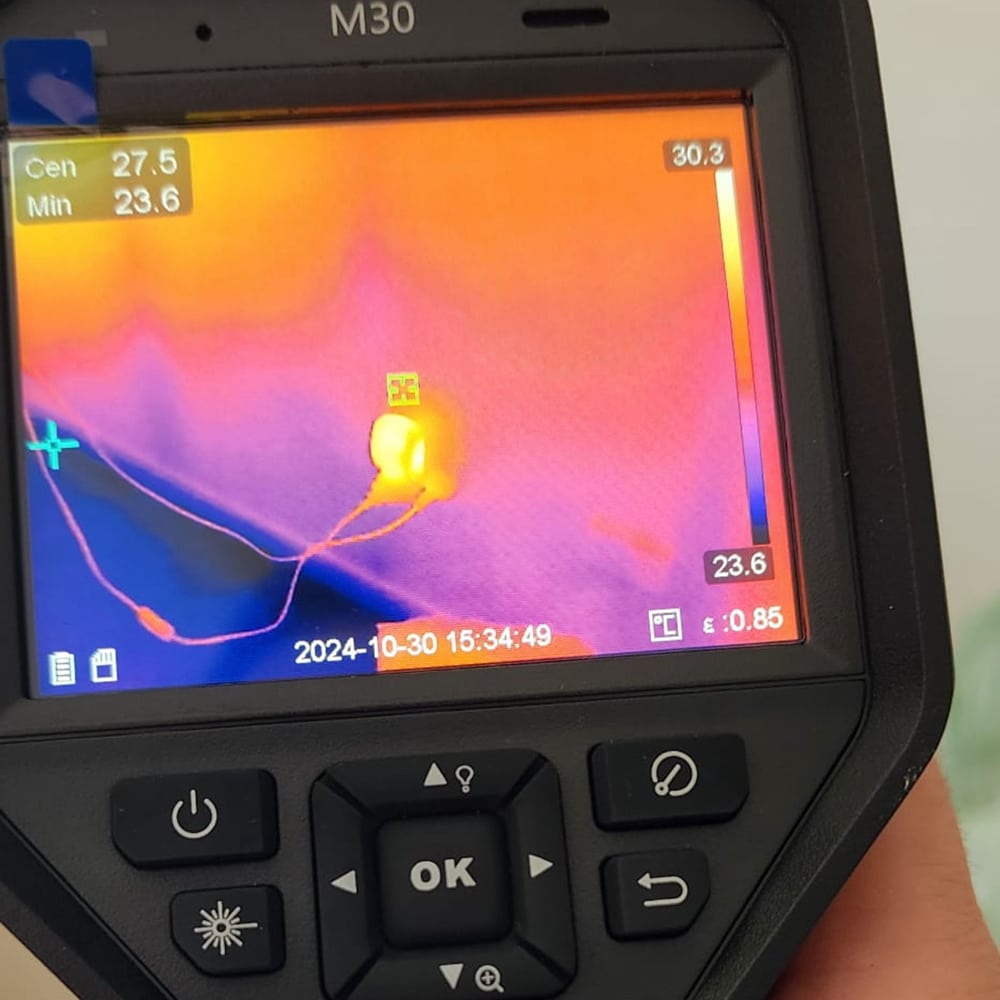
Ever wondered why reliable pest monitoring is crucial for Central Coast NSW homes? Early detection protects your sanctuary from unwanted invaders.
The Central Coast of NSW is a region known for its stunning beaches and lush hinterlands. However, it also faces challenges with pests that can disrupt homes and businesses. Ongoing pest monitoring is crucial in maintaining a pest-free environment. This proactive approach not only helps in early detection but also prevents potential infestations from escalating.
Understanding the Local Pest Landscape
The Central Coast hosts a diverse range of pests, including termites, ants, and rodents. These pests thrive in the region’s mild climate and can easily invade homes and commercial properties. By understanding which pests are most active during different seasons, property owners can tailor their monitoring and control strategies effectively.
Benefits of Regular Pest Monitoring
Regular pest monitoring offers numerous benefits, including early detection of pest activity. This proactive approach minimises damage and reduces the need for extensive treatments. It also helps identify patterns in pest behaviour, enabling more targeted interventions. Moreover, ongoing monitoring provides peace of mind, knowing that potential threats are being managed continuously.
Techniques for Effective Pest Monitoring
Effective pest monitoring involves a combination of visual inspections and the use of traps or sensors. Regular walk-throughs help identify signs of pest activity such as droppings or nests. Additionally, technology like motion sensors can detect movement in areas less accessible to humans. These techniques, when used together, provide a comprehensive overview of pest activity.
Integrating Pest Monitoring with Control Strategies
Monitoring is most effective when integrated with tailored pest control strategies. Once pests are detected, targeted treatments can be applied to control infestations. This might include baiting, chemical treatments, or environmental adjustments to make properties less hospitable to pests. Combining monitoring with control measures ensures long-term pest management success.
Engaging Professional Pest Services
While DIY monitoring is possible, engaging professional pest services offers a higher level of expertise. Professionals possess the knowledge and tools necessary for comprehensive monitoring and effective control. They can provide tailored advice and solutions specific to the Central Coast’s unique pest challenges, ensuring optimal protection for properties.
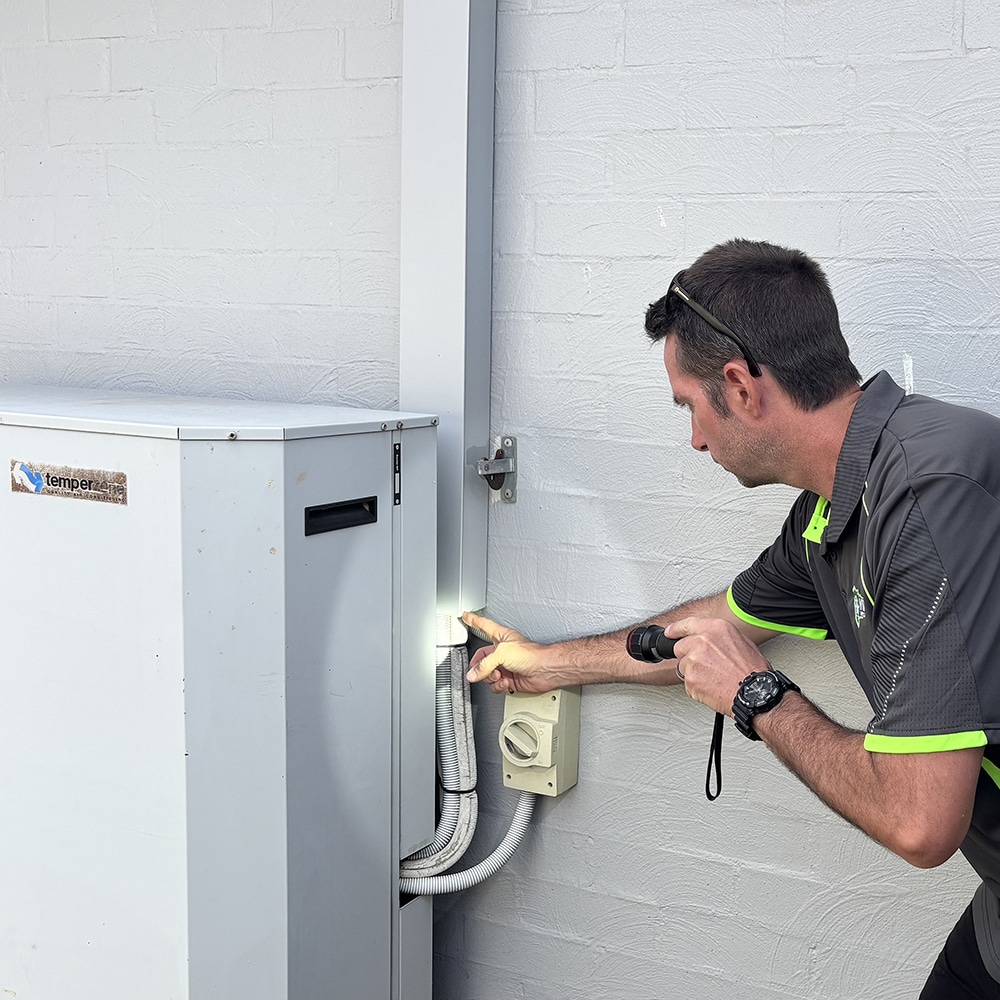
Are you aware of how crucial reliable pest management is on the Central Coast? Stay informed to protect your home and health today.
The Central Coast of NSW is a picturesque region, but like many areas, it faces challenges with pests. Understanding these nuisances is crucial for maintaining a healthy environment. By increasing awareness about pest behaviours and prevention strategies, residents can better protect their homes and communities. Pest education is vital for effective management and control.
Common Pests on the Central Coast
Residents often encounter pests such as termites, cockroaches, and rodents. Termites, in particular, pose significant threats to wooden structures. Cockroaches thrive in warm, humid conditions, common in the area’s climate, while rodents seek shelter and food within homes. Recognising these pests is the first step in managing their impact.
Impact of Pests in Health and Property
Pests can severely affect both health and property. Termites can cause extensive damage to buildings, leading to costly repairs. Cockroaches and rodents can spread diseases, contaminating food and surfaces. Understanding these risks helps underscore the importance of proactive pest control measures.
Prevention Strategies for Homeowners
Homeowners can take several steps to prevent pest infestations. Regular maintenance, such as sealing cracks and eliminating standing water, reduces entry points for pests. Proper food storage and waste management also deter rodents and cockroaches. Implementing these strategies can protect homes from unwelcome invaders.
Role of Professional Pest Control Services
Professional pest control services offer specialised knowledge and tools to manage pest issues effectively. These experts can identify signs of infestations early, preventing severe damage. Regular inspections and treatments tailored to specific pests ensure long-term protection. Engaging professionals provides peace of mind and a pest-free environment.
Community Involvement and Education
Community initiatives can significantly enhance pest education and awareness. Workshops and informational sessions help residents learn about local pests and prevention techniques. By sharing knowledge and resources, communities can collaborate to reduce pest-related issues, fostering a healthier living environment for all.
Please leave your details in the form and we will call you back the same day.
So that we can process your enquire efficiently please leave as many details as possible and upload any relevant images. (.jpg and .png format)
• Reliable And Trustworthy
• Responsive Proactive Solutions
• Detail-focused for lasting results
We are ready to help you with Cockroaches, Spiders, Ants, Wasps, Fleas, Termites, Rodents, and Possum Relocation.
Call Adam on 0431 222 894 for Responsive Pest Control Services on The Central Coast NSW, Newcastle and The Hunter Valley.
Homeowners Business Owners Shopping Centre Management Real Estate Agents
It may also be an urgent or time-sensitive situation.
If you have questions just reach out to Adam on 0431 222 894 and he’ll be happy to help you.
Looking for APVMA-approved low-toxicity options? We offer various solutions that are safe for your family and the environment. These options are effective for pest control while ensuring minimal impact on your home ecosystem. Discover alternatives that balance safety and efficiency.
Botanical Insecticides
Derived from naturally occurring substances, botanical insecticides offer a safe alternative to traditional chemicals. They target pests without harming beneficial insects. Ideal for gardens and homes, these options are both effective and low in toxicity, ensuring your space remains healthy and vibrant.
Biological Control
Utilising natural predators can effectively manage pest populations. Introducing beneficial insects into your environment reduces pest numbers without the need for harsh chemicals. This method is eco-friendly and sustainable, promoting a balanced ecosystem in your garden.
Eco-Friendly Baits
Our eco-friendly baits are designed to attract and eliminate pests with minimal risk to pets and humans. These baits use low-toxicity ingredients that specifically target unwanted guests. They’re a smart choice for maintaining a safe home environment.
Choosing the right pest control method can be daunting. Our team is ready to assist you in selecting the best APVMA-approved options for your needs. For more information or to schedule a consultation, please Contact Us today.
Natural pest control methods offer a sustainable way to manage pests without relying on harmful chemicals. These eco-friendly solutions are gaining popularity due to their minimal environmental impact and effectiveness in maintaining a balanced ecosystem.
Benefits of Natural Pest Control
Natural pest control methods help preserve beneficial insects and reduce chemical exposure. By using organic solutions like diatomaceous earth or neem oil, you can effectively manage pests while protecting your garden’s health. This approach also supports biodiversity, ensuring a thriving environment.
Common Natural Methods
Many people use companion planting to deter pests. For instance, planting marigolds near tomatoes can repel nematodes. Introducing predatory insects like ladybugs also controls aphids naturally. These methods not only protect plants but also enhance garden resilience.
Effectiveness and Tips
While natural pest control methods are effective, they require patience and consistency. Regularly monitoring pest levels and combining different strategies can yield the best results. A handy tip: keeping your garden clean reduces pest habitats, boosting the success of natural approaches.
Looking to explore more about natural pest control? Contact Us for tailored solutions to keep your home pest-free.
When it comes to managing pests, integrated pest management strategies offer a balanced approach. These methods focus on long-term prevention and minimal risk to people and the environment. Let’s dive into some effective strategies that can keep your space pest-free.
Biological Control
Biological control uses natural predators to keep pest populations in check. For example, ladybirds can help control aphid populations in gardens. This method reduces the need for chemical pesticides, making it an eco-friendly option for maintaining a healthy ecosystem.
Cultural Practices
Changing cultural practices can significantly reduce pest issues. Rotate crops regularly or maintain proper sanitation to disrupt pest lifecycles. These practices create environments that are less inviting to pests, reducing the chances of infestations.
Mechanical Controls
Using traps or barriers can physically remove or block pests from entering spaces. Installing screens on windows or using sticky traps for insects can be effective. These methods are straightforward and often provide immediate results without chemical use.
Monitoring and Identification
Regular monitoring helps identify pest problems early. Knowing which pests are present allows for targeted management. Early identification and action can prevent minor issues from becoming major infestations, saving time and resources.
Responsible Chemical Use
When necessary, use chemicals responsibly. Opt for targeted pesticides and apply them at the right time to minimise impact on non-target species. Always follow guidelines to ensure safety and effectiveness in pest control.
Interested in implementing these strategies? Contact Us for expert advice and tailored pest management solutions.
Yes, organic pest control products are available, offering a natural solution to keep pests at bay without harsh chemicals. These products are gaining popularity among homeowners looking for eco-friendly ways to protect their gardens and homes.
Benefits of Organic Pest Control
Organic pest control products use natural ingredients to deter pests, reducing environmental impact. They are often safer for pets and children, making them an excellent choice for families. These products can be just as effective as conventional options, providing peace of mind without sacrificing safety.
Types of Organic Products
Organic pest control offers a variety of products, from sprays and powders to traps and deterrents. Common ingredients include essential oils, diatomaceous earth, and neem oil. Each product targets specific pests, so it’s crucial to choose the right one for your needs.
How to Choose the Right Product
When selecting an organic pest control product, consider the pest type and infestation severity. Read labels carefully to ensure effectiveness and safety. Consult a professional if you’re unsure, as they can provide tailored advice for your situation.
Explore our range of organic pest control products and protect your home naturally. For personalised advice, feel free to Contact Us.
Minimising environmental impact as a pest controller is crucial in today’s eco-conscious world. By using sustainable methods, we can manage pests effectively while protecting the natural ecosystem. Here’s how pest controllers can do their part.
Integrated Pest Management
Integrated Pest Management (IPM) focuses on long-term prevention. It combines biological, cultural, and physical strategies to keep pests in check. By understanding pest life cycles and their environment, IPM reduces the need for chemical pesticides.
Eco-Friendly Products
Using eco-friendly products is a game-changer. Natural or organic pesticides can be as effective as chemical ones without harming non-target species. They break down quickly, leaving minimal residue in the environment.
Targeted Treatments
Applying treatments directly where pests thrive limits environmental exposure. Spot treatments ensure that only affected areas receive pesticides, reducing the overall chemical footprint. This method also spares beneficial insects that help control pest populations naturally.
Regular Monitoring
Frequent inspections help track pest activities and catch infestations early. By monitoring regularly, pest controllers can implement preventative measures, reducing the need for widespread pesticide use. Early intervention is key to maintaining balance in the ecosystem.
Choosing a pest controller that prioritises environmental health is a smart choice for any property owner. If you’re ready to make a difference while managing pests effectively, Contact Us today.
Dealing with pests can be frustrating, but nature offers several solutions. In Australia, these natural deterrents keep unwanted critters at bay. Discover ways to maintain a pest-free home without harsh chemicals.
Eucalyptus Oil
Eucalyptus oil, with its strong scent, deters many pests. A few drops around entry points can discourage insects like spiders and ants. Its natural properties make it a popular choice for households. By using eucalyptus oil, you create an environment that pests find uninviting.
Citrus Peels
Citrus peels repel spiders and other insects. Place them near windowsills or doorways. Their natural oils are effective in keeping pests away. Plus, they add a fresh, pleasant aroma to your home, enhancing your living space while doubling as a deterrent.
Vinegar and Water Spray
Mix equal parts vinegar and water in a spray bottle. This simple solution disrupts ant trails and deters flying insects. Spritz it around baseboards and countertops for added protection. Not only is it effective, but it’s also an economical and eco-friendly option.
Herbs and Plants
Grow herbs like mint and basil around your home. These plants naturally repel pests. Their strong fragrances keep mosquitoes and flies at bay. Incorporating such greenery also enhances your garden’s appeal, offering both beauty and functionality.
Utilising natural deterrents can keep your home pest-free while maintaining a healthy environment. For more personalised advice or pest control services, consider reaching out. Contact Us for professional assistance.
Protecting beneficial insects is crucial for maintaining a healthy ecosystem in your garden. These insects naturally control pests and pollinate plants, so it’s important to keep them safe while managing your garden’s health.
Use Natural Pest Control
Opt for natural pest control methods like introducing ladybirds or lacewings. These insects help control aphid populations without harming the environment. Avoid chemical pesticides, which can harm both pests and beneficial insects. Natural methods ensure a balanced garden ecosystem.
Plant Diversity
Encourage beneficial insects by planting a variety of flowers and herbs. Plants like lavender, dill, and marigold attract insects such as bees and hoverflies. By offering diverse food sources, your garden becomes a haven for these helpful creatures, boosting biodiversity.
Provide Habitats
Incorporate elements like rock piles or small water features. These provide shelter and resources for beneficial insects. Leave some areas of your garden undisturbed to create natural habitats. This approach supports a thriving insect community, contributing to a balanced ecosystem.
Minimise Disturbance
Reduce garden disturbance by limiting tilling and excessive pruning. These actions can destroy nests and habitats. Gentle gardening practices preserve the homes of beneficial insects, ensuring their continued presence and work in your garden.
Ready to enhance your garden’s health by protecting beneficial insects? Discover more tips and professional advice. Contact Us today for expert guidance.
Looking for sustainable pest control methods? You’re on the right track. Sustainable practices not only manage pests effectively but also protect our environment. Here are some eco-friendly options to consider.
Natural Predators
Introducing natural predators is a great technique. Ladybirds are famous for controlling aphid populations. Encourage these beneficial insects in your garden by planting flowers like marigolds and daisies. This method is both effective and chemical-free.
Companion Planting
Companion planting involves growing two or more plant species close together. Basil, for example, can repel flies and mosquitoes when planted near tomatoes. This method enhances plant growth and deters pests naturally.
Diatomaceous Earth
Using diatomaceous earth is a natural way to control pests. This powdery substance dehydrates insects like ants and bedbugs without harming humans or pets. Simply sprinkle it around entrances or problem areas for best results.
Neem Oil
Neem oil is an effective, organic pesticide. It’s derived from the seeds of the neem tree and is safe for humans. Spray it on plants to deter pests like aphids and spider mites. Remember, a little goes a long way.
For more advice or assistance with sustainable pest control, feel free to Contact Us. We’re here to help keep your home pest-free and eco-friendly.
Eco-friendly treatments are gaining popularity for their minimal environmental impact. But how long do they really last? Let’s explore how these treatments stack up in terms of longevity and effectiveness.
Average Lifespan of Eco-Friendly Treatments
Generally, eco-friendly treatments can last between three to six months, depending on factors like the type of pest and environmental conditions. Regular maintenance can extend their effectiveness, ensuring a pest-free environment for longer. Eco-friendly solutions focus on prevention, reducing the need for frequent reapplications.
Factors Influencing Longevity
The lifespan of eco-friendly treatments depends on various factors, such as climate, type of treatment, and pest behaviour. For instance, areas with heavy rainfall might require more frequent applications. Monitoring and regular inspections can help maintain effectiveness, saving both time and money in the long run.
Maximising Treatment Efficiency
To maximise the efficiency of eco-friendly treatments, consider integrating them with other preventive measures. Sealing entry points and maintaining cleanliness can enhance their impact. This comprehensive approach not only extends the treatment’s lifespan but also contributes to a healthier environment.
Understanding the duration and effectiveness of eco-friendly treatments can help you make informed decisions for your home or business. For tailored advice and eco-friendly solutions, feel free to Contact Us.
Looking into whether green pest control solutions are more expensive? Many people consider eco-friendly options for their homes and businesses. Let’s explore some key aspects of green pest control and its costs.
Initial Costs Considered
At first glance, green pest control might seem pricier. These solutions often use natural ingredients, which can be costlier than traditional chemicals. However, the long-term benefits, such as fewer health risks and environmental damage, often outweigh initial expenses.
Long-Term Savings
Green pest control can offer savings over time. By reducing pest resistance and avoiding the need for frequent treatments, these solutions can lead to fewer repeat visits. This approach often results in better value and less hassle in the long run.
Value Beyond Costs
Choosing green pest control isn’t just about price. It’s about protecting your family and the planet. These solutions are safer for children and pets, and they help preserve the environment by reducing chemical runoff and soil contamination.
Making the switch to green pest control can be a smart investment. Curious about eco-friendly options for your space? Contact Us to learn more about sustainable pest management solutions.
Need Some Advice From A Professional Pest Technician?